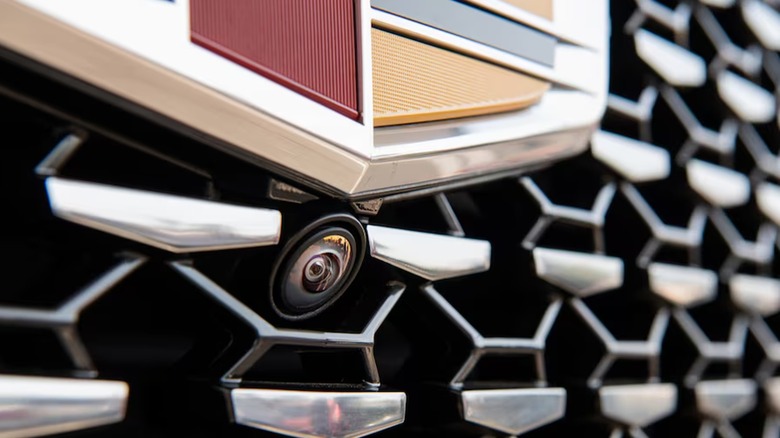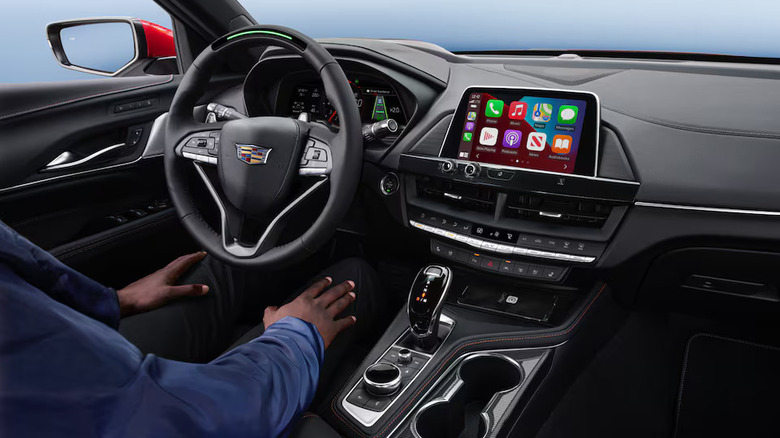Adaptive Cruise Control Vs. Super Cruise: What's The Difference And How Do They Work?
The concept of cruise control in cars has been around for decades, but it's only been in the last 10 to 20 years or so that it's really come into its own as a vital feature. The overall goal of basic cruise control functionality is to maintain your car's speed while driving down the highway, which lets you take your foot off the pedal and spare you the toe cramps. Cruise control is not, however, an autopilot system, at least not in its basic form.
However, as with just about any other feature you might find on a car these days, cruise control is steadily evolving into territories it previously couldn't reach. Interestingly, cruise control has actually experienced something of a divergent evolution, tailoring itself to the needs (and wallets) of different kinds of drivers. Two of the most prominent forms of advanced cruise control systems are adaptive cruise control, which is more of a direct improvement on the cruise control we already know, and Super Cruise, which might be more in line with the self-driving cars of the future we've always wanted.
Adaptive cruise is an evolution of existing cruise control systems
A normal cruise control system functions entirely internally — you can set your car to stay at a certain speed, but it's going to stay there no matter what's happening on the road around it unless you manually adjust it. An adaptive cruise control system, also known as dynamic cruise control and active cruise control, is still designed to serve that same general purpose of speed management, but with the help of information gathered from outside the car.
An adaptive cruise control system utilizes equipment like cameras, radar, and laser measurement to gauge the distance between your car and the other cars driving on the road. Using this information, the system automatically makes subtle adjustments to the speed you've set in order to keep a safe pace with cars behind and in front of you. If you engaged the system at 60 mph, for instance, the system would do its best to maintain that speed, but if it detects the car in front of you starting to slow down, it would automatically match its pace to stay safely behind it.
Additionally, adaptive cruise control systems usually come equipped with warning systems for the driver. If a car suddenly stops short in front of you, the system would deploy visual and auditory warnings to let you know you need to hit the brakes. Adaptive cruise control can handle some of the minutiae of highway driving, but it still requires you to be engaged with the road.
Super Cruise is a mid-point between cruise control and autonomous driving
Despite tech advancements, we still haven't reached the point of wholly autonomous cars just yet. Whenever we do get there, though, the ensuing system will probably bear at least some resemblance to Super Cruise. Super Cruise is a next-generation system present on a variety of different high-end cars under the GM umbrella. It made quite a splash with us here at SlashGear.
Super Cruise utilizes many of the same systems present in an adaptive cruise system, gauging the distance between your car and others with various sensor systems and working to keep you in step with the flow of traffic. The big difference is that Super Cruise can also take a degree of control over your steering wheel in addition to the engine. Using powerful GPS mapping features, the system monitors not just other cars, but the presence of white lines and curves on the road.
With this info, the system will do its best to keep you in your lane, automatically making steering adjustments. With the help of Super Cruise, you can actually take your hands off the wheel and let the car handle it. However, the wheel itself is also equipped with a sensor to make sure you're still paying attention. It's not a true autopilot, just a helper, and if you try to look away or nod off, the system will give you a stern warning.

